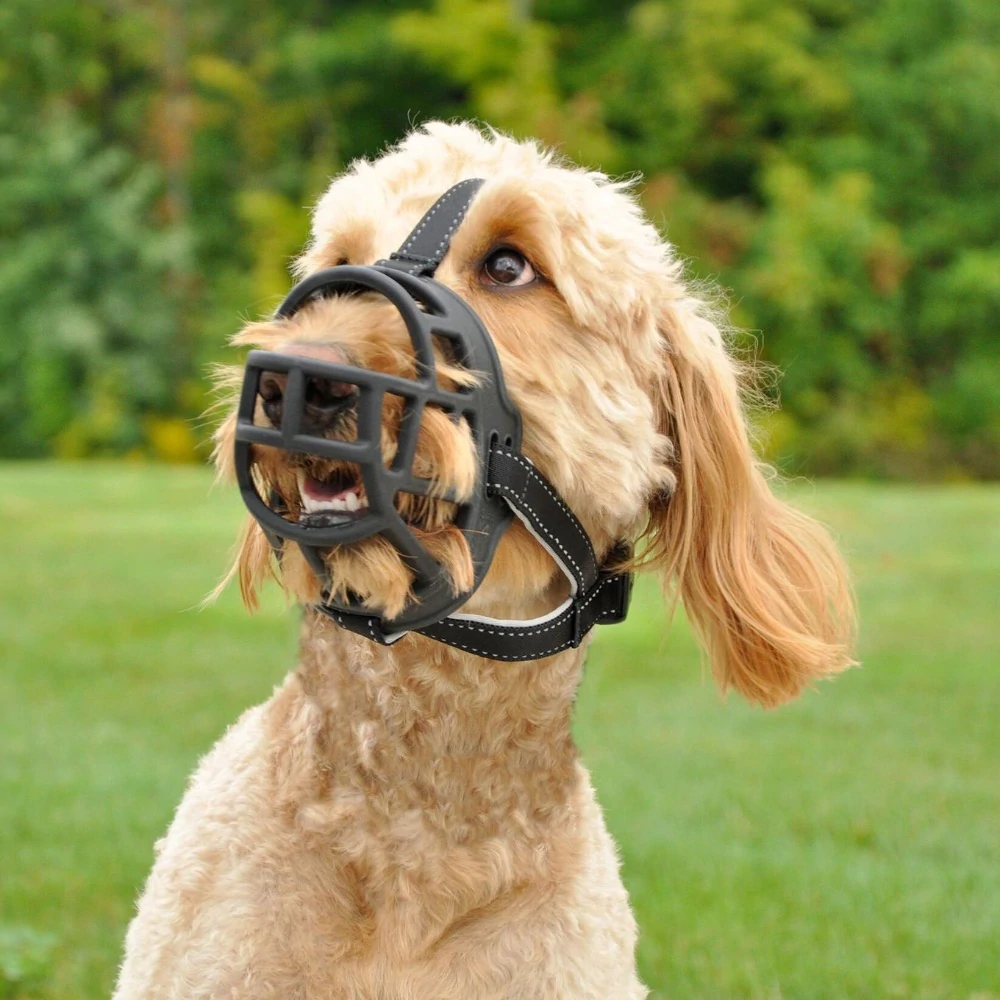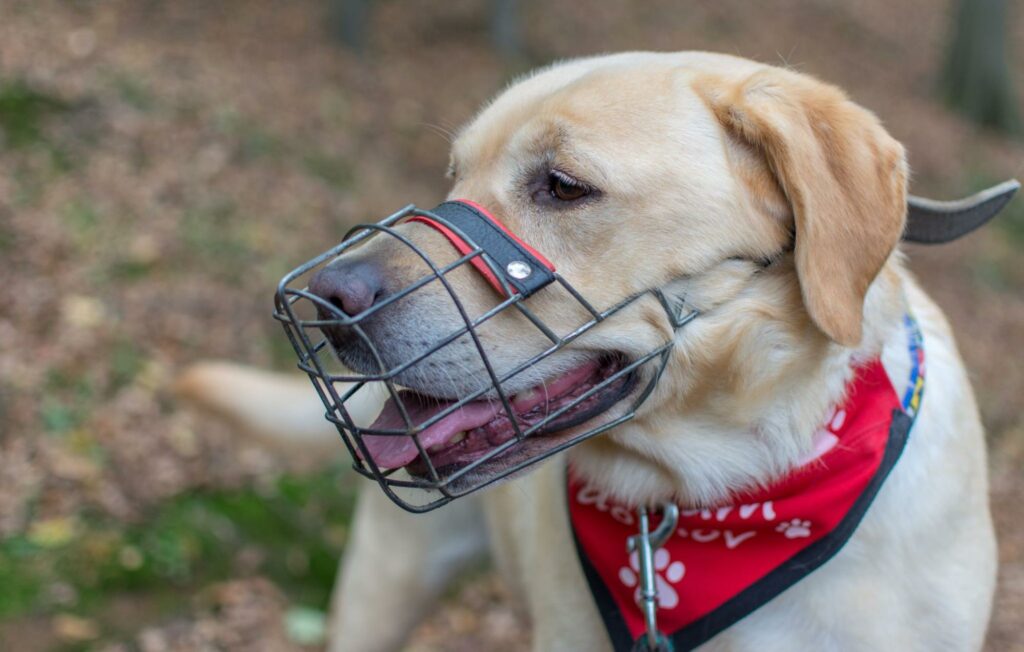 Dog muzzles are much misunderstood, with umpteen misconceptions encompassing their purpose, usage, and touch on a dog’s overall well-being. It’s time to debunk these myths and shed light on the truth about dog muzzles. Contrary to popular belief, muzzles can be a valuable tool for safety, training, and even felicity for our furry friends. In this article, we will address some common misconceptions all but dog muzzles, providing precise selective information and dispelling some fears or misunderstandings. So, let’s dive in and learn more about the truth fundament these misconceptions, completely piece maintaining a relaxed and cheerful tone!
Dog muzzles are much misunderstood, with umpteen misconceptions encompassing their purpose, usage, and touch on a dog’s overall well-being. It’s time to debunk these myths and shed light on the truth about dog muzzles. Contrary to popular belief, muzzles can be a valuable tool for safety, training, and even felicity for our furry friends. In this article, we will address some common misconceptions all but dog muzzles, providing precise selective information and dispelling some fears or misunderstandings. So, let’s dive in and learn more about the truth fundament these misconceptions, completely piece maintaining a relaxed and cheerful tone!
Muzzles Are Only for Aggressive Dogs
One of the most prevailing misconceptions about track muzzles is that they are entirely meant for aggressive dogs. Muzzles are not scoop to aggressive dogs; they can be helpful for various reasons and situations. For instance, dogs’ whitethorn wear muzzles during vet visits, grooming sessions, or in crowded public spaces to keep them from potentially biting or causing harm unintentionally. Additionally, muzzles put up aid in demeanor limiting training by providing a safe environment for dogs to learn and interact positively with their surroundings. By understanding that muzzles serve a broader purpose on the far side aggression, we can reject the stain joint with their usage.
Muzzles Are Cruel and Inhumane
Another commons misconception about dog muzzles is that they are inherently cruel or inhumane. This belief stems from a miss of understanding all but the unusual types of muzzles available and how they can be properly used. Muzzles should ne’er restrict a dog’s ability to breathe, pant, or drink. With proper training and prescribed reinforcement, dogs tin learns to connect the muzzle with positive experiences, ensuring their comfort and happiness. By repudiation this misconception, we tin encourage responsible for muzzle usage and promote the well-being of our hirsute companions.
Muzzles Are a Sign of a Bad Owner
Some people believe that if a dog wears a muzzle, it is an indication of a bad or aggressive owner. This assumption is unfair and unfounded. Dog owners who choose to use muzzles are often responsible and caring individuals who prioritize their dog’s safety and the safety of others. It’s requirement to remember that each chase after is unique, and some may require additional refuge measures, including muzzles, regardless of the owner’s competence or training efforts. By dispelling this misconception, we can foster a more understanding and supportive community for all responsible for dog owners.
Muzzles Are a Permanent Solution
One commons misconception is that once a dog starts wearing a muzzle, they wish always need to wear it. The truth is, muzzles are often used as a temp root for specific situations or during a dog’s training process. With proper training and conduct modification techniques, dogs can learn to exhibit capture behavior and no thirster require the use of a muzzle. Muzzles should be seen as a tool to help in the preparation process, rather than a permanent reparation in a dog’s life. By understanding this, we can better support dogs and their owners in overcoming challenges and reach their training goals.
Muzzles Are a Substitute for Training
A prevalent misconception is that muzzles can replace specific grooming and conduct limiting techniques. This notion undermines the importance of training and can lead to further misunderstandings about the purpose of muzzles. Muzzles should ne’er be secondhand as a resole means of dominant a dog’s behavior. Muzzles provide a refuge net during the preparation process, enabling dogs to instruct and interact with the world in a controlled and positive manner. By highlighting the grandness of training alongside the use of muzzles, we can ensure that dogs welcome the comprehensive support they need.
Muzzles Make Dogs Unhappy
Contrary to pop belief, muzzles put up actually contribute to a dog’s happiness when used appropriately. Dogs are creatures who bank on routine and structure for a sense of security. By victimization muzzles during possibly stressful situations, much as vet visits or grooming sessions, owners can help palliate their dog’s anxiety. Muzzles provide dogs with a clear boundary and a feel of protection, allowing them to sense more at ease in unfamiliar environments. Additionally, muzzles can prevent dogs from engaging in behaviors that may have harm or lead to negative consequences, which ultimately contributes to their boilersuit happiness and well-being. This positive association can nurture a sense of trust between the dog and their owner, advance enhancing their happiness and strengthening the bond between them. By debunking the misconception that muzzles make dogs unhappy, we can encourage a more equal and informed position on their usage.
Muzzles Are a Reflection of a “Bad” Dog
One misconception encompassing muzzles is the notion that dogs who wear thin them are inherently “bad” or aggressive. This stereotype unfairly judges dogs based on their appearance rather than their individual temperament or behavior. It’s epochal to remember that any dog, regardless of multiply or size, put up benefit from the use of a gag in certain situations. Muzzles should not be seen as a reflection of a dog’s character, but rather as a responsible refuge precaution. By challenging this misconception, we put up foster a more inclusive and understanding environment for all dogs and their owners.
Here are some tips on how to use dog muzzles correctly:
- Introduce the Muzzle Gradually: It’s important to introduce the muzzle gradually to your dog. take up by allowing them to sniff and investigate the muzzle while offering treats and praise. Gradually shape up to touching their snout with the gag and eventually put it on. This sloping go about helps dogs link up the gag with positive experiences.
- Use Positive Reinforcement: Use positive reinforcement techniques, such as treats, praise, and rewards, to create a positive association with the muzzle. Reward your chase after when they willingly put away their scent into the muzzle or when they wear it comfortably for longer durations. This helps them associate the muzzle with formal experiences and reduces any potential anxiousness or resistance.
- Ensure Proper Fit: Choose a muzzle that fits your chase after properly. A well-fitted gag should allow your dog to open their mouth, pant, and tope water comfortably. keep off muzzles that are too tight or restrictive, as they tin make uncomfortableness and block normal functions. Follow the manufacturer’s guidelines or consult a professional person to check the correct fit.
- Don’t lead Your Dog Unattended: It’s crucial not to leave your dog unattended while they are wearing a muzzle. While muzzles ply a necessity safety measure, they are not meant to replace supervision. Stay present and paying attention to your dog’s needs to ensure their well-being and safety at all times.

By addressing and debunking these common misconceptions about chase muzzles, we can promote a more accurate understanding of their purpose, usage, and impact on dogs’ lives. When secondhand appropriately, muzzles can provide dogs with a sense of security, aid in behavior modification, and even enhance their happiness. It’s essential to approach gag usage with education, training, and a commitment to prescribed reinforcement techniques. By embracing the truth about dog muzzles, we can create a safer and more pity world for dogs and their owners. Remember, when it comes to muzzles, noesis and sympathy pave the elbow room for happier, healthier, and harmonious lives between humans and their canine companions.